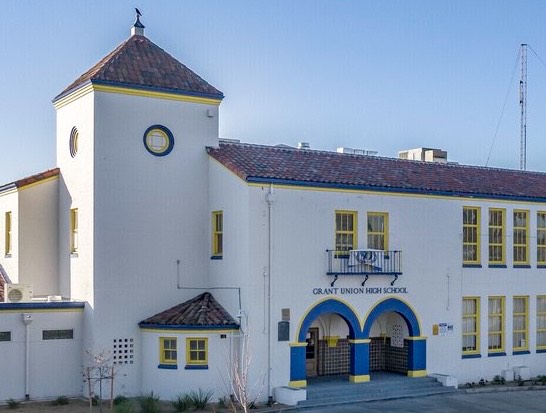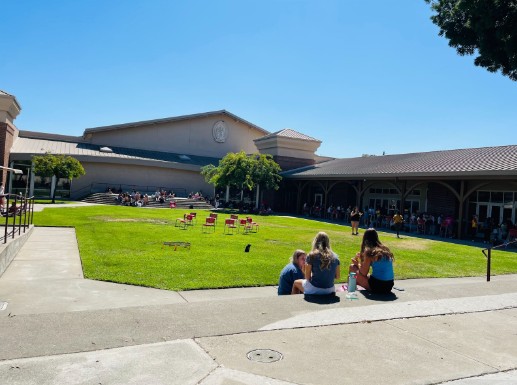St. Francis Catholic High School has begun implementing Classwize, software installed on all school-owned Chromebooks that administrators hope will maximize student learning by allowing teachers to monitor student online activity and minimize the use of distracting and inappropriate websites.
Last year, Principal Elias Mendoza and Director of Educational and Information Technology Mary Castellano began working with teachers and other administration members to test different software programs like Classwize. These all aimed to focus students and create a safer, more-engaging learning environment.
Among the other softwares they tested was GoGuardian, another internet-filtering technology commonly used in schools. In June 2015, GoGuardian reported that more than 1,600 of the 15,000 school districts in the United States had installed its program. In January 2015, the Los Angeles Unified School District began implementing GoGuardian in order to meet the requirements of the Child Internet Protection Act, which dictates what students can access on the Internet while on campus.
St. Francis eventually chose Classwize over GoGuardian because of its wide range of features that suit the school’s needs, as well as its user-friendliness. Classwize also allows St. Francis to meet CIPA requirements through its filtering browser, which can be controlled by the St. Francis administration.
Castellano said Classwize “allows us to set filters … (on) things that wouldn’t be appropriate for anyone under 18 to be looking at, especially on a school-issued device.”
Classwize’s second primary feature grants teachers the ability to direct students to specific sites.
“What (teachers) can do is send out a link to (students), which opens up a window, and then you’re stuck in that link, and you can’t go to any other tabs,” Castellano said.
Teachers are able to effectively “shut-down” students’ browsers by keeping them on a specific tab only.
The shift to Classwize and its primary features comes from many issues that the St. Francis administration is seeking to solve. Not only does Classwize minimize distractions for students during class, but it is also more user-friendly than other software systems like GoGuardian, where students’ previously opened tabs do not repopulate after a session ends.
“(Classwize) was nice because it allowed that user friendliness for our students, where they didn’t have to feel like, wow, if I don’t save everything before I go to class, I’m going to lose it all,” Castellano said.
Another reason for integrating Classwize is to prepare students for future digital exams, like Advanced Placement tests and the SAT.
“(Classwize) is just training students to be ready for the shift that’s happening now in AP (exams) and (the) SAT,” Mendoza said, “but also when you go to college, where similar technology is utilized already.”
In addition, Castellano said Classwize could help to ensure academic integrity within classrooms, especially during quizzes and tests.
“Academic integrity is part of the reason why teachers wanted to have a product (like Classwize) that they could use so they could spend their time actually helping students rather than trying to catch students doing something wrong,” Castellano said. “That’s not what they want to be in the classroom for.”
However, student misconceptions and a lack of information and transparency from the St. Francis administration has led to student concerns about their data privacy and the belief that the administration is using Classwize to constantly track student online activity.
“Some of my friends don’t even know about Classwize, that it exists and that they’re being watched,” said Morgane Bertran, a sophomore who has experience with the program because it was tested in her computer science class last year.
One of her main concerns is that she might not know when Classwize is being used by the administration, and she often wonders if teachers can see her computer screen all the time.
Specifically, she worries that Classwize’s student online activity monitoring feature will prevent students from utilizing StopIt, an anonymous incident reporting and safety technology that is installed on all student Chromebooks.
“Can the teachers and the staff see your screen while you’re trying to report something on StopIt, and you’re being very vulnerable and trying to be anonymous?” Bertran asked. “What if you need to report a teacher for any reason and the teacher can see what you’re writing?”
Castellano said there are measures in place that prevent teachers from seeing their students’ Chromebook activity at all times.
“We have specifically, in writing, informed the teachers that they may only use Classwize when students are in front of them in the classroom,” she said. “We’ve trained them on how to remove students who are absent … and they have been advised and told that (a Classwize session) may only be used at the (start) of the class period. You can’t start a Classwize session early.”
Teachers are not required to use Classwize during their classes, although it is recommended when students are using their Chromebooks. This means that when students are put into a Classwize session, teachers will notify them first.
Many students, however, are not aware of these rules. Some worry that they are constantly being monitored by Classwize, a belief that stems from a lack of available information about what Classwize is and how St. Francis will be using it.
To combat this, Mendoza said that he and the administration could start sharing more information about Classwize by posting a Classwize FAQs document on the St. Francis website and communicating more with students and parents.
“We’ll continue to maybe provide some additional education for parents (and students), just so that they become familiar with Classwize – what it is, what it’s not, and why we use it,” Mendoza said.
Ultimately, the goal of Classwize is student safety, and the St. Francis administration hopes to emphasize this with its additional information on Classwize. St. Francis strives to be CIPA-compliant, administrators say, and this is just one method to achieve that.
“It’s absolutely not about the idea of trying to catch students doing something they shouldn’t be doing,” Castellano said. “It is to make sure that we are keeping students in an educational setting. And then if there are things that we have concerns about – we want to make sure (students) feel safe, and that (they) have the services (they) need.”










